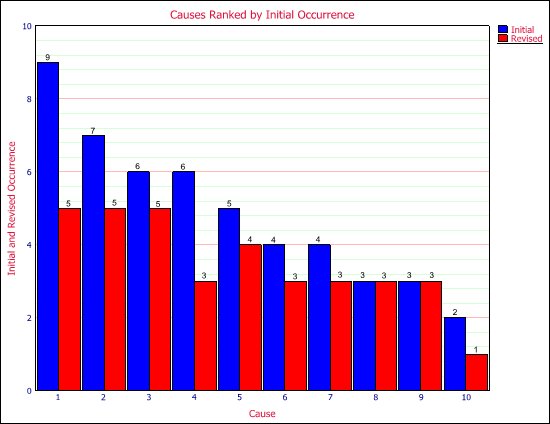How to identify the occurrence levels in FMEA?
How to identify the occurrence levels in FMEA?

How to identify the occurrence levels in FMEA?
FMEA helps an organization to undertake risks in business activities by carefully evaluating all the risks and putting in the necessary checks and controls to either eliminate or reduce these risks. Occurrence levels for each risk are given by evaluating the frequency with which the given risk is occurring in the process. As FMEA is prepared by people who are working in the process, they are very well aware of which defect is most likely to occur in the process and which is least likely. Ratings are given accordingly on a scale of 1 to 10. The importance of calculating Occurrence in FMEA is very important as it helps in identifying the defects which very frequently happen in the process. This helps in prioritizing such failures for subsequent improvement actions to eliminate or reduce their occurrence in the process.
How to identify the occurrence levels in FMEA?
Let us now understand how the risk frequency occurrence levels are given
• Rating 1 – There is very less possibility of occurrence.
• Rating 2 – The possibility of occurrence is low.
• Rating 3 – Isolated occurrence of failure.
• Rating 4 – Occurrence of failure is occasional
• Rating 5 – Occurrence of failure is moderate
• Rating 6 – Failure occurs sometime.
• Rating 7 – Failure occurs frequently but not in major proportions
• Rating 8 – Failure occurs frequently in major proportions
• Rating 9 – Failure is occurring regularly.
• Rating 10 – Surety of failure every time.
Categorization of Failure Occurrence
Just like severity, many organizations have a practice of rating failure occurrence category wise to easily understand the frequency with which that failure is expected to happen. The most common categories for rating failure occurrence are:
• Minor – This represents rating 1 and Occurrence of failure is not at all expected and is unlikely to happen.
• Very Low – This represents Rating 2 and possibility of occurrence is very low.
• Low – This represents Rating 3 and 4 and only isolated incidents of occurrences are expected.
• Moderate – This represents rating 5 to 7 and failures occur sometime but not in very large numbers
• High – This represents rating 8 and 9 and failures occur often in the process, significantly degrading the performance of the process
• Very High – This represents Rating 10 and failure is sure to happen every time the process is working.

 Shishu Pal
Shishu Pal 

































Anushtha
Failure Mode and Effective Analysis, abbreviated as FMEA, is a process of identifying and addressing potential risks and failures. This analysis also includes analyzing the possible effect of the risks on the product or the processes before any adverse event occurred. Occurrence in FMEA measures the likelihood of the failures mode caused will be present in the item being analyzed. Alike severity, the occurrence can be measured and categorized using numerals. 1. Minor - In the minor occurrence level, the likelihood of failure is least expected and the possibilities are zero. On a scale of 1 to 10, the minor occurrences are ranked as 1. 2 Very Low - In the very low occurrence level, the likelihood of failure is very low. On a scale of 1 to 10, very low occurrences are ranked as 2. 3. Low - In the low occurrence level, the likelihood of failure is isolated and lowly expected. On a scale of 1 to 10, the low occurrences are ranked as 3 or 4. 4. Moderate - In a moderate occurrence level, the likelihood of failure is a bit more but not in very high quantity. On a scale of 1 to 10, the moderate occurrences are ranked as 5, 6, or 7. 5. High - At a high occurrence level, the likelihood of failure is often and considerably affects the performance of the product. On a scale of 1 to 10, the high occurrences are ranked as 8 or 9. 6. Very High - In a very high occurrence level, failure is determined to occur each and every time the product is being used. On a scale of 1 to 10, very high occurrences are ranked as 10. Our experts at Visure Solutions did some considerable research on Failure Occurrence. Go ahead and check it out and feel free to get in touch with our team.